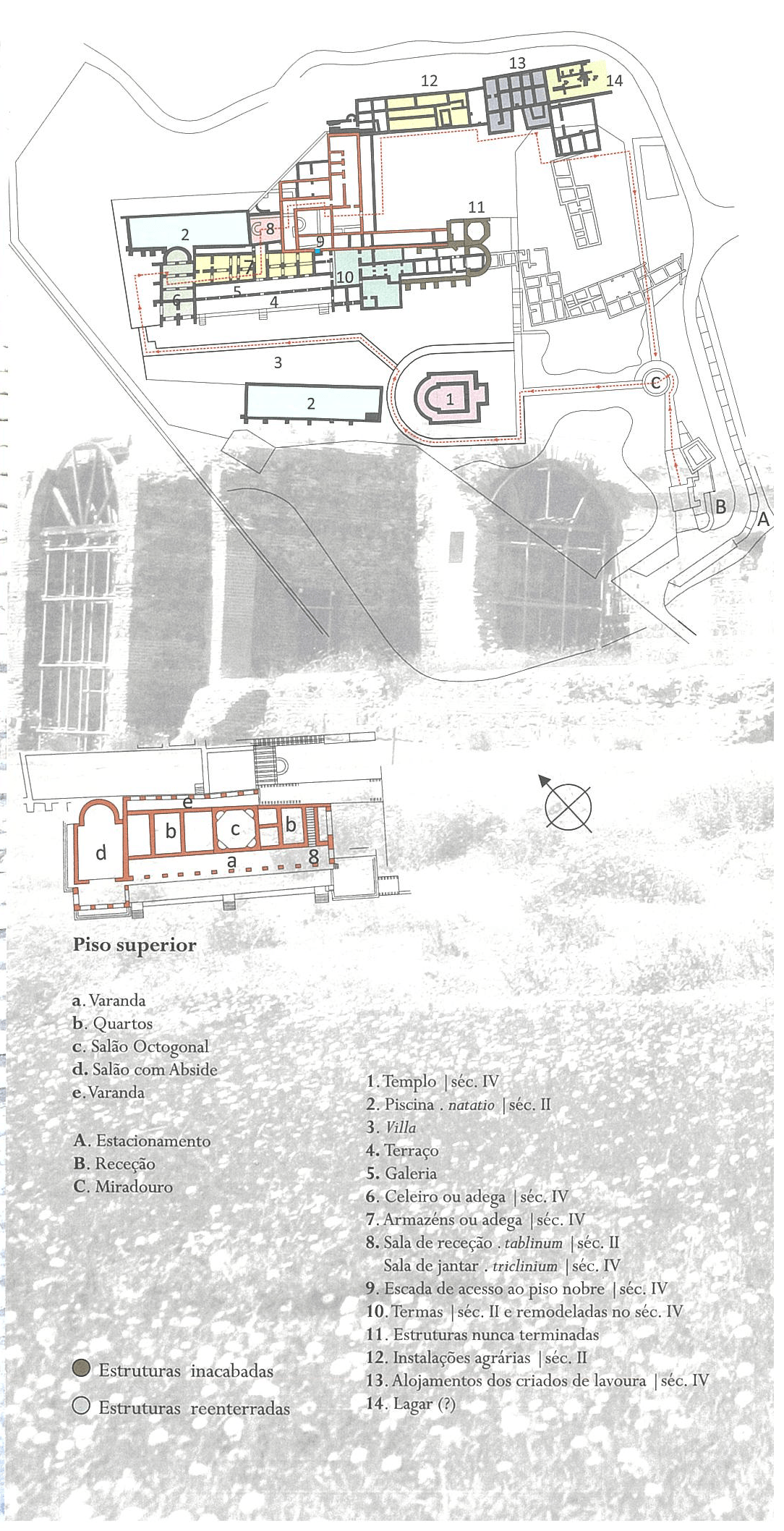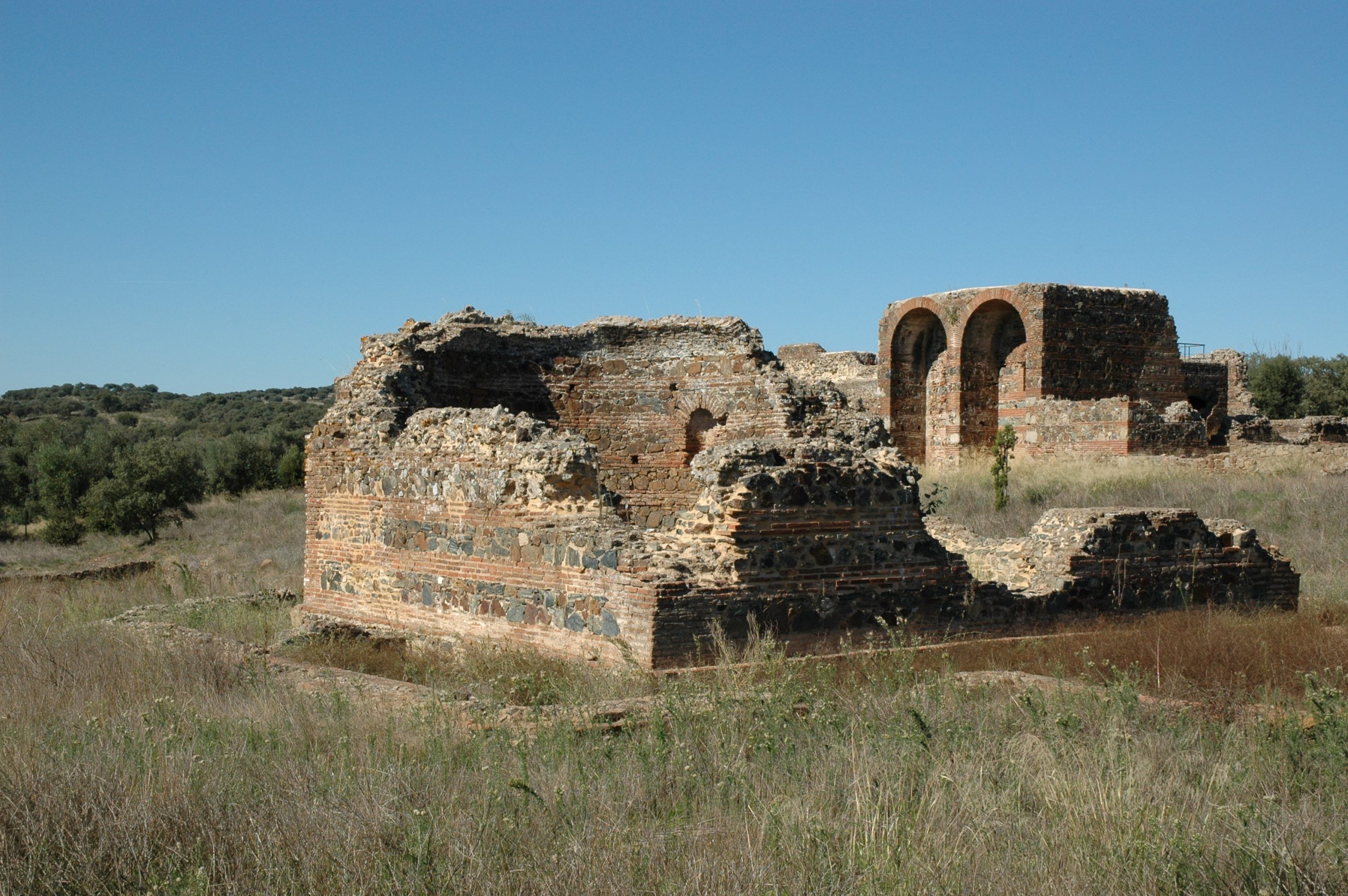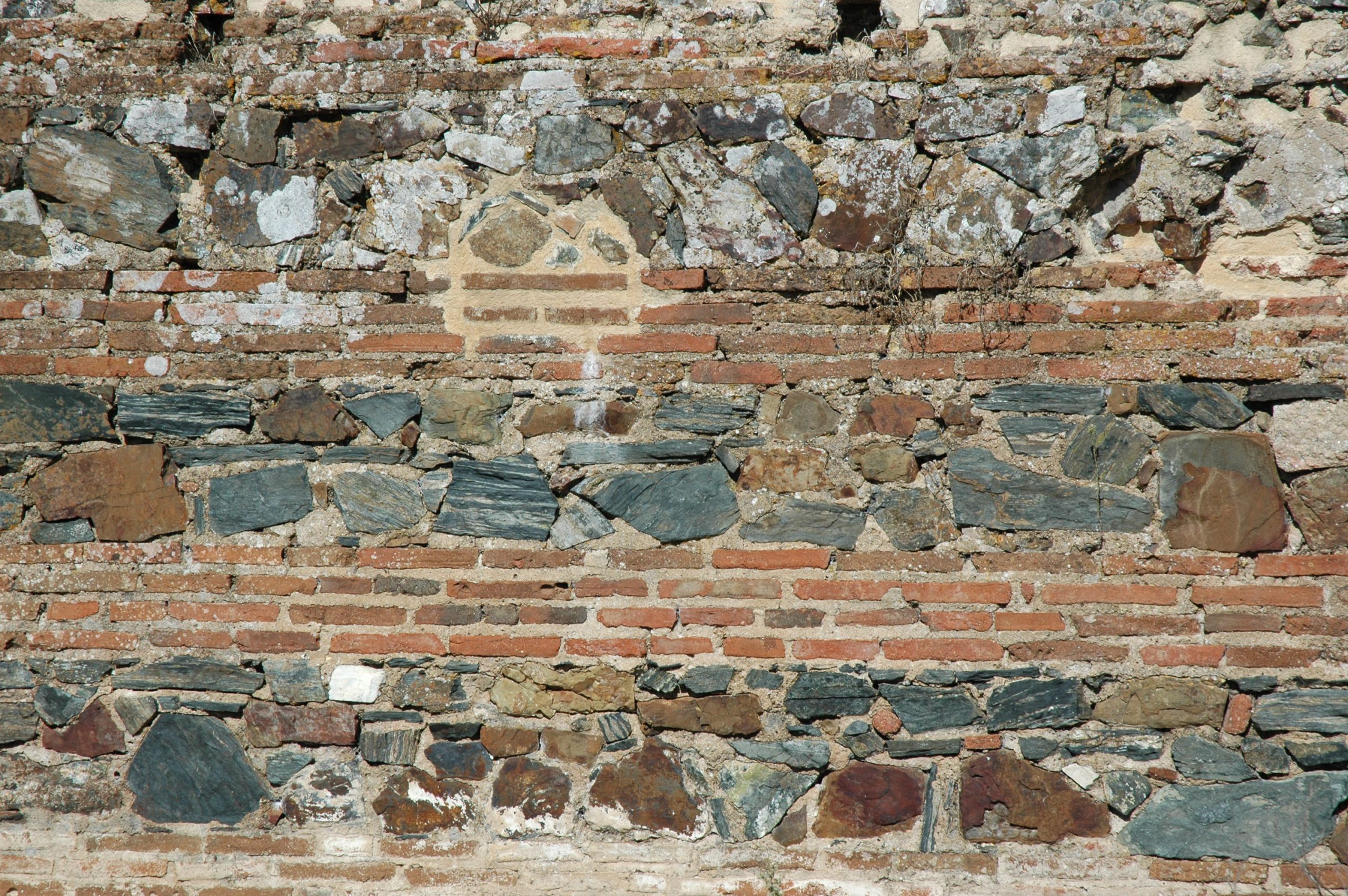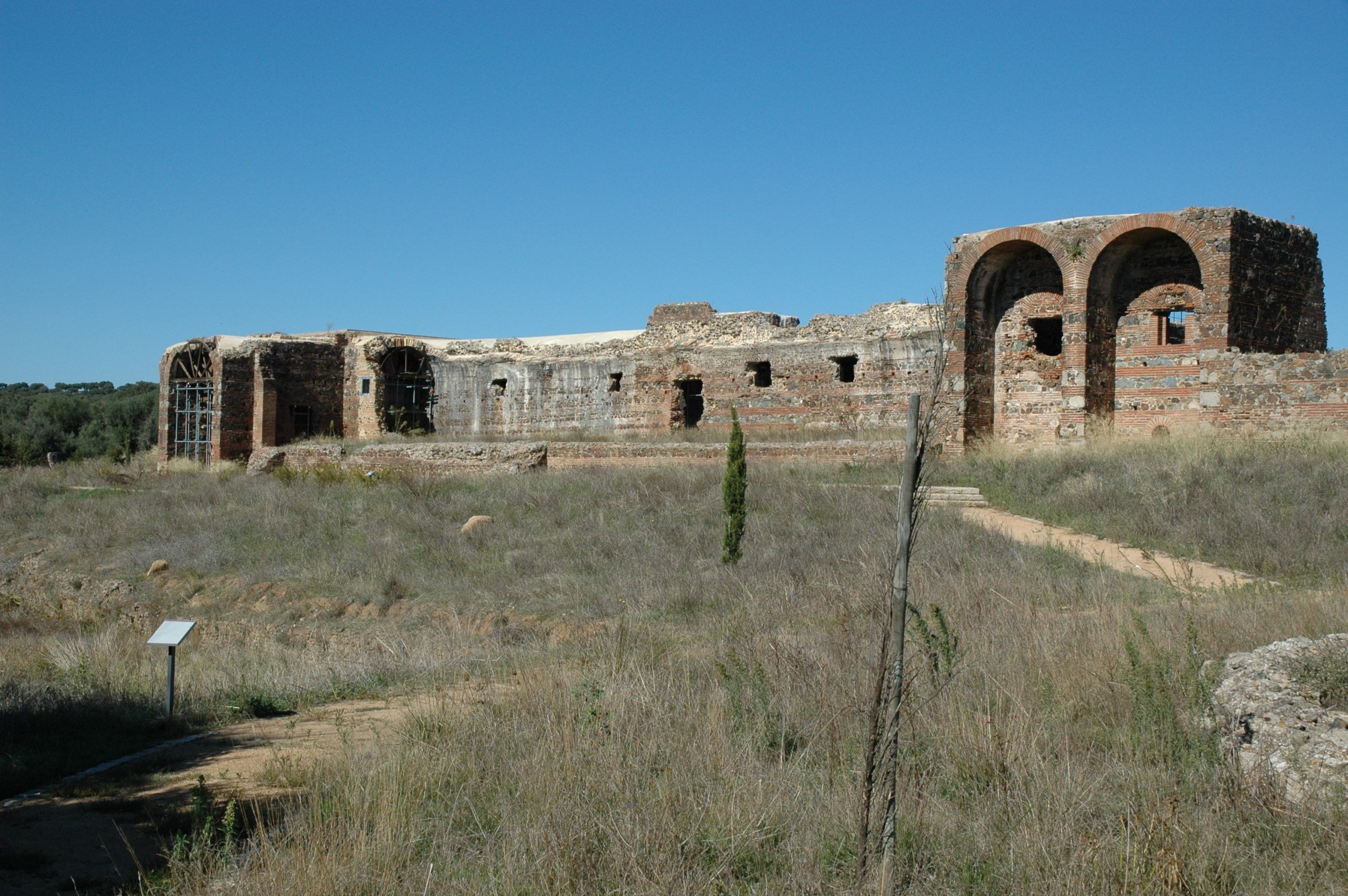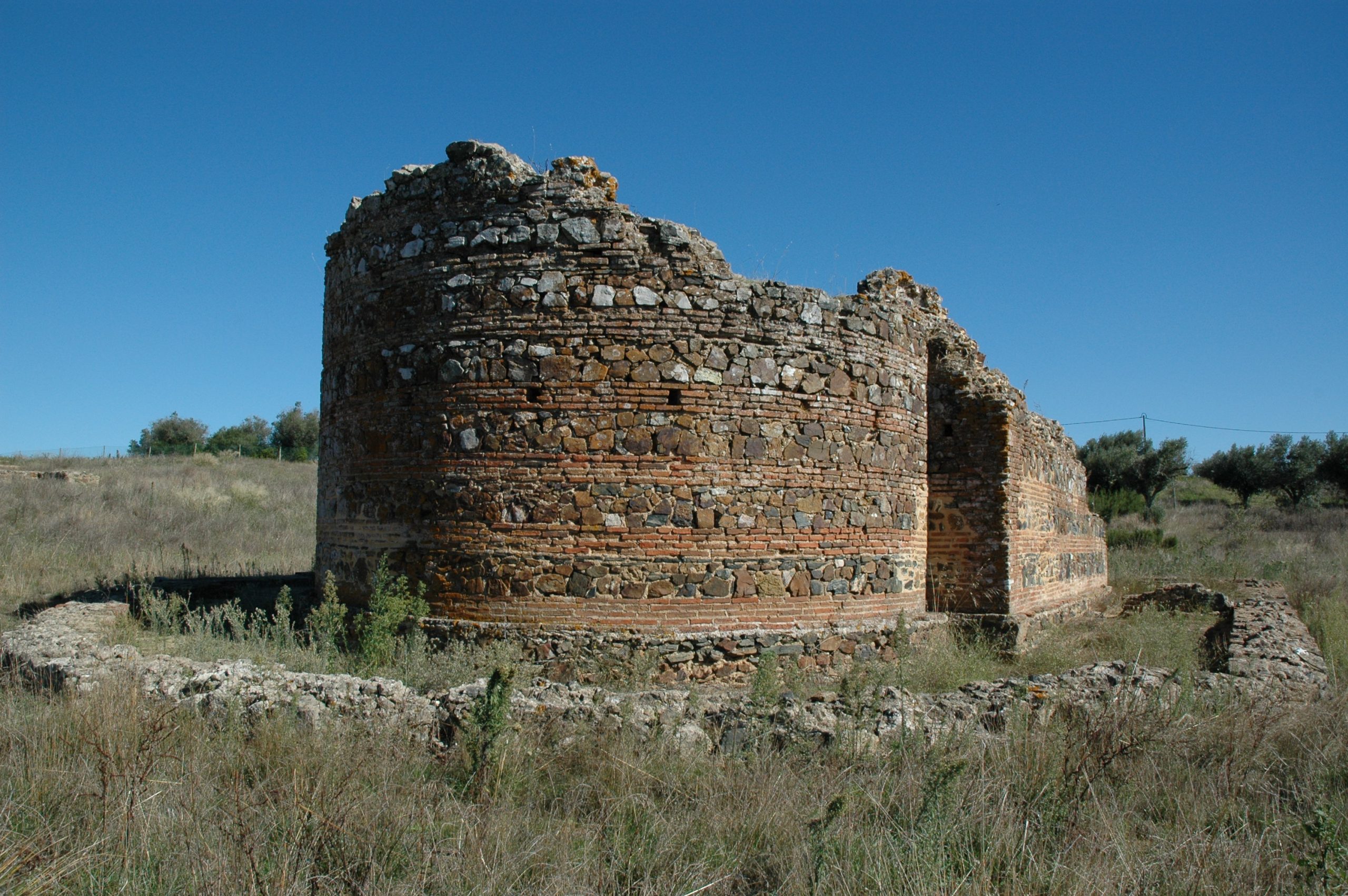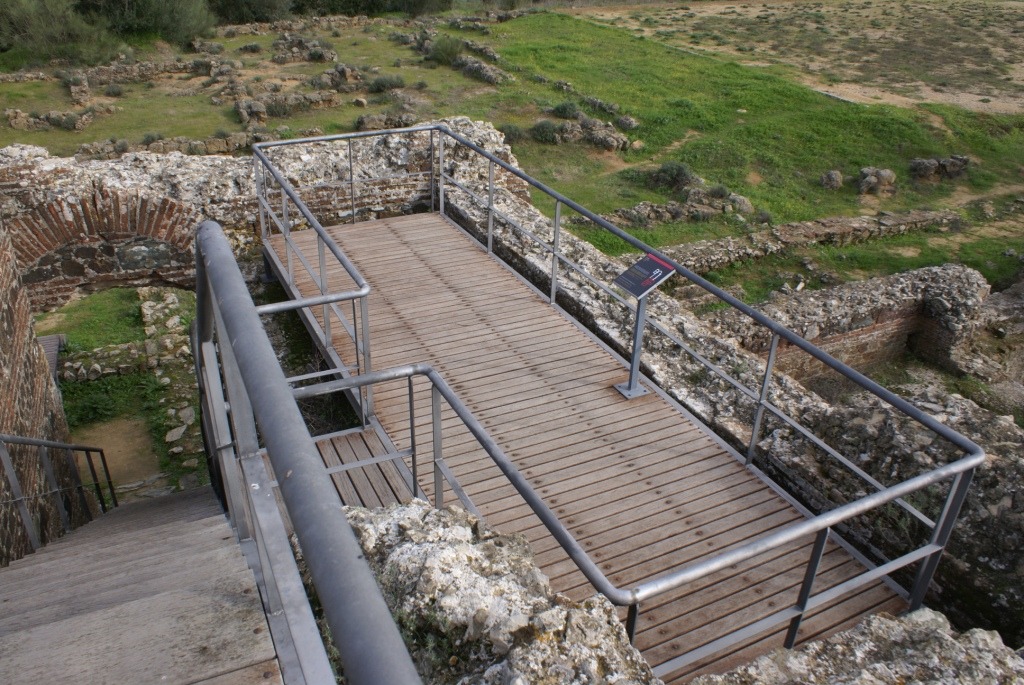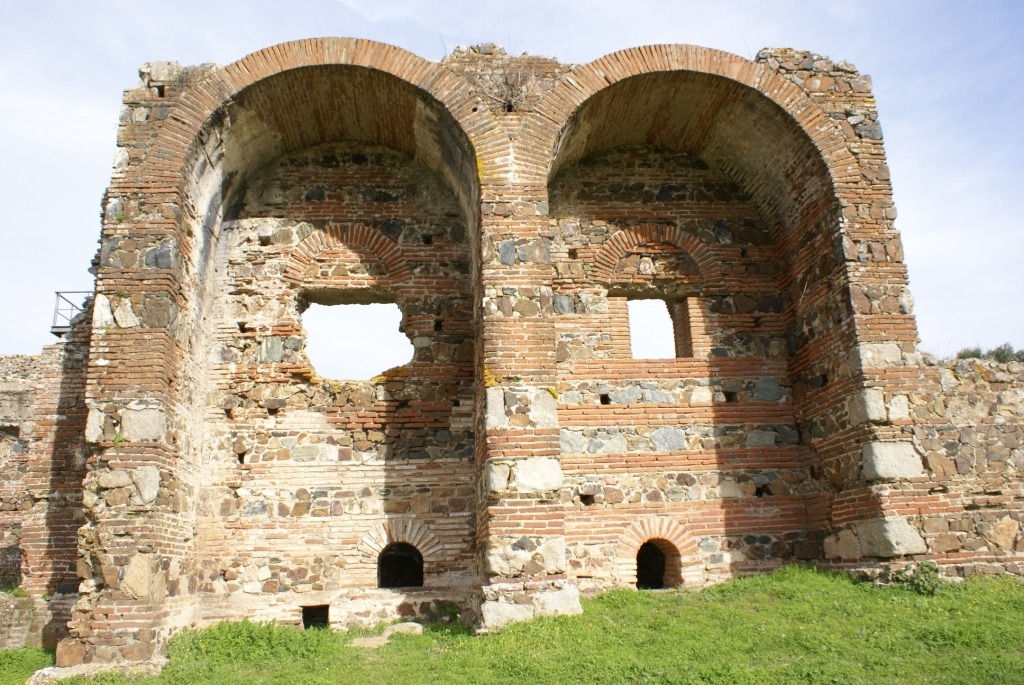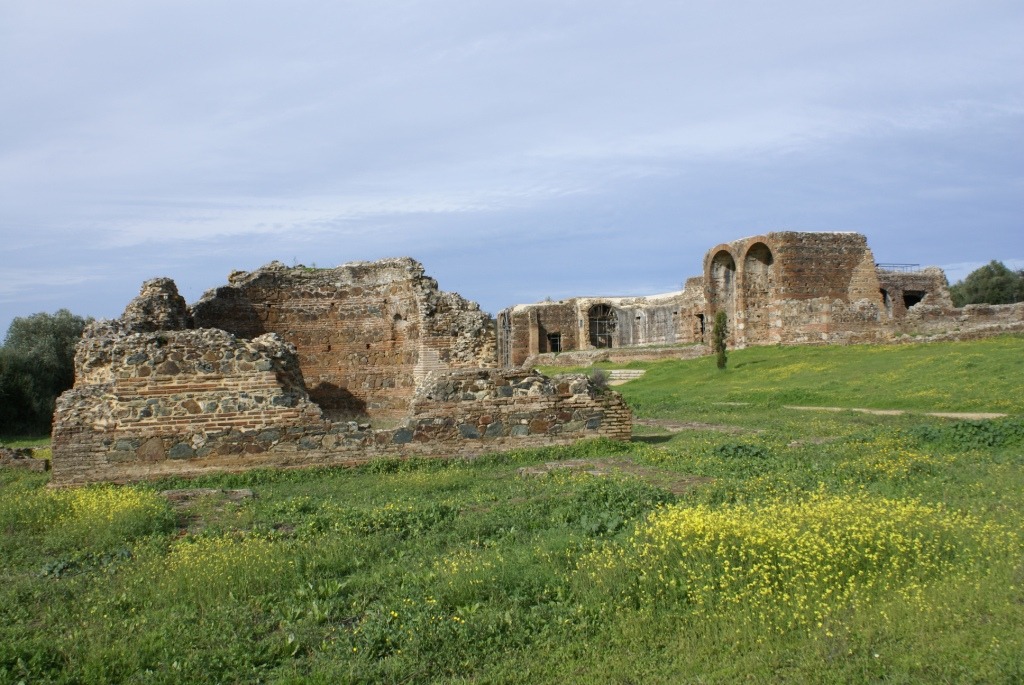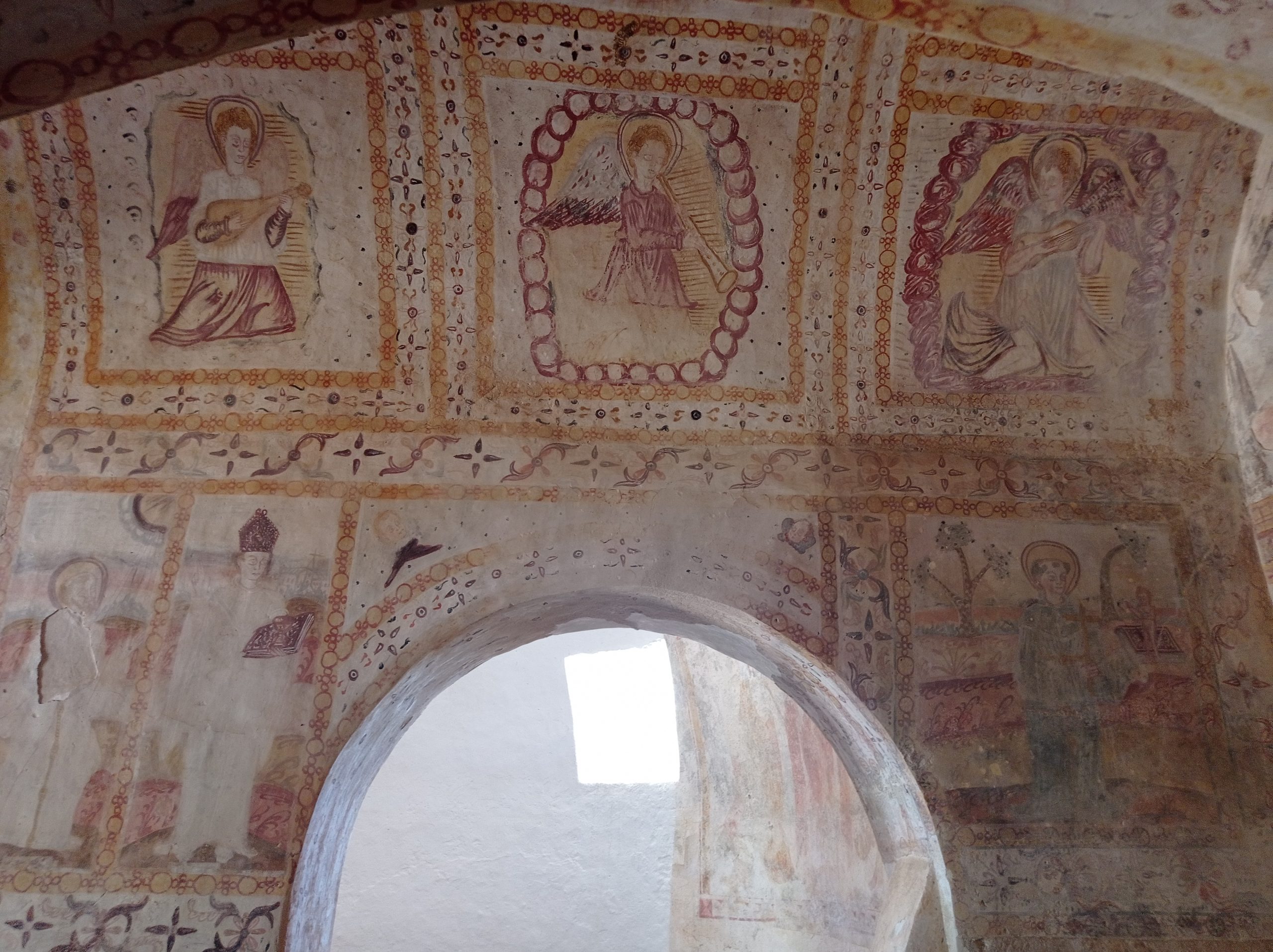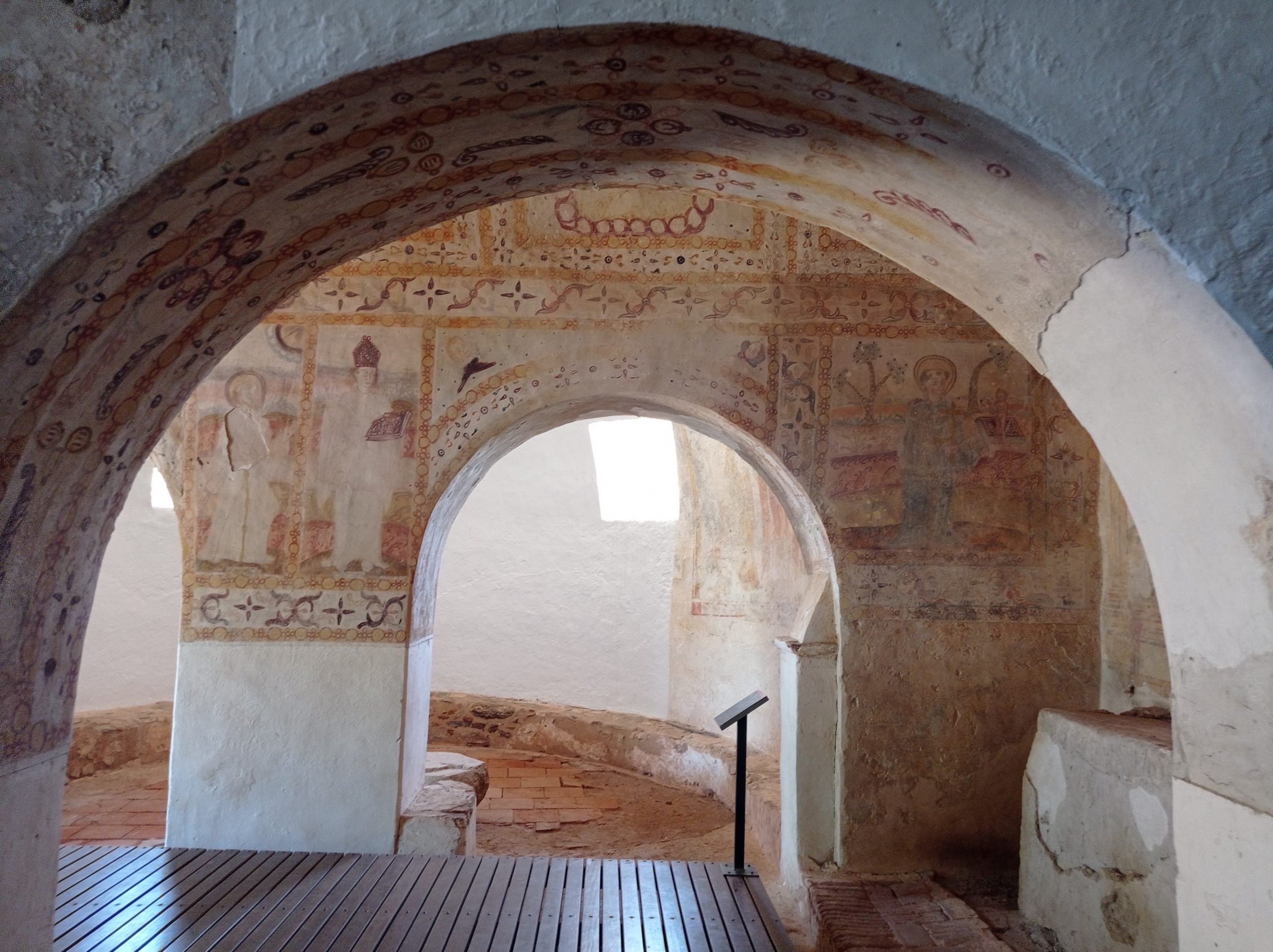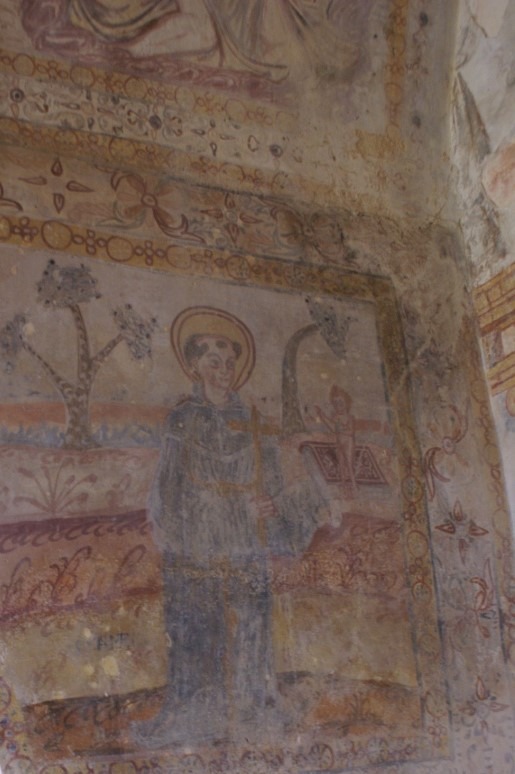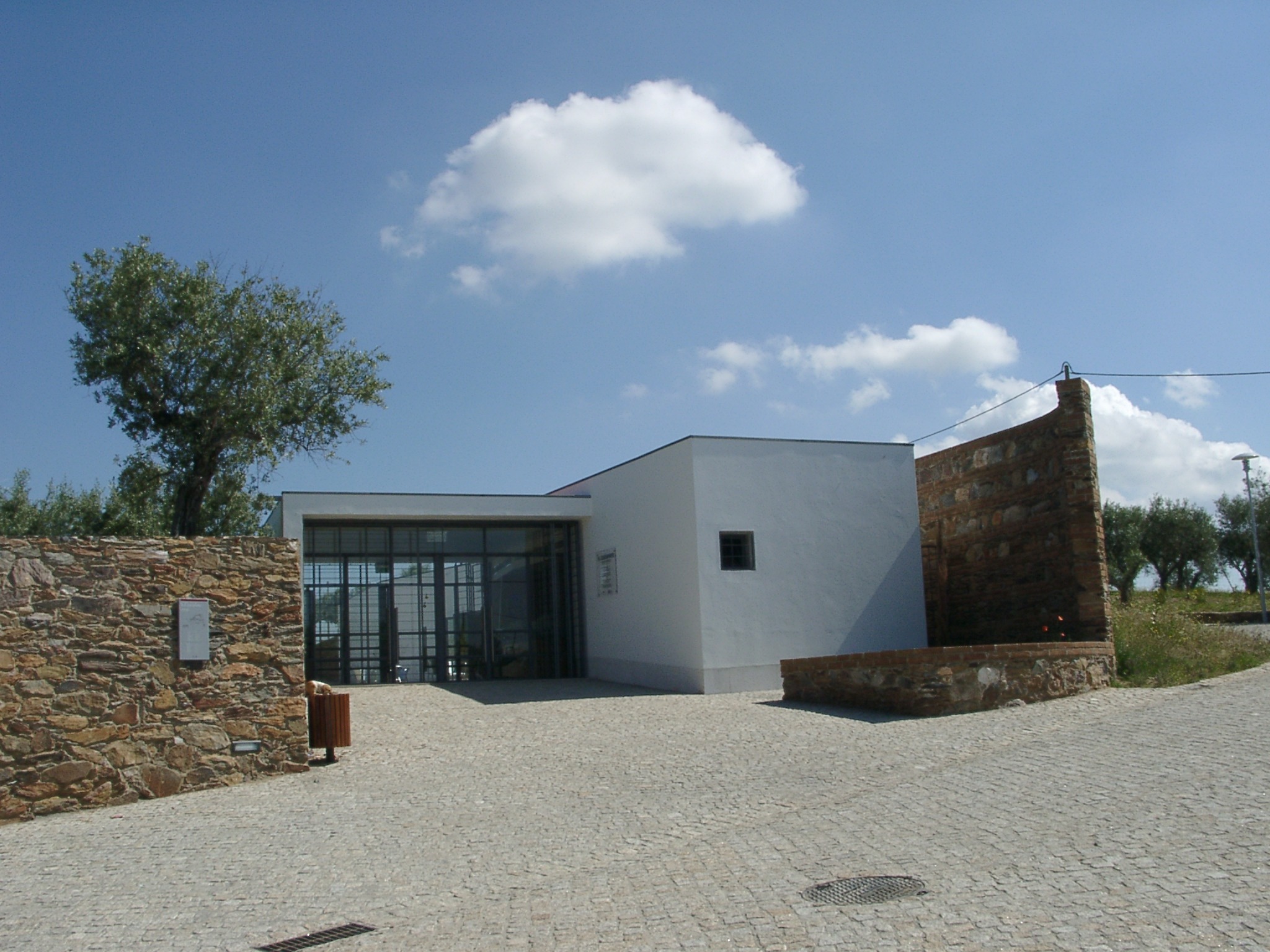Vidigueira
Roman Villa
of São Cucufate
38º13'21.06"N / 7º50'41.69"O
Tuesday to Sunday
Summer (May 2 to September 15): Tuesday: 2.30 p.m. – 6.30 p.m.;
Wednesday to Sunday:10 a.m. - 12.30 p.m. / 2.30 p.m. – 6.30 p.m.
Winter (September 16 to April 30): Tuesday: 2 p.m. - 17h30;
Wednesday to Sunday: 10 a.m. – 1 p.m. / 2 p.m. – 5.30 p.m.
Closed on the holidays of January 1, Easter Sunday, April 25, May 1,
Ascension Day, and December 25
About
Roman Villa of São Cucufate
The site of the Roman villa of São Cucufate, classified as a National Monument on June 28, 1947, was already occupied at the end of the 4th millennium B.C. since lithic and ceramic items from that date were found at the site.
The Roman villa that was built here in the 1st century A.D. was restructured in the middle of the 2nd century A.D. and for a third time in the second half of the 4th century A.D. This last construction campaign would break the architectural model of the first two phases, with the space of the pars urbana (the main house) closed upon itself and centred around one or two inner courtyards. The last phase preferred an architectural style open to the outdoors, developed in two linear plans with recovered façades.
In addition to the main house, the villa’s pars rustica (dedicated to agricultural and livestock activities) was also significant, with structures such as barns, cellar, presses, forges, chicken coops, cattle yards, and shreds to store straw or firewood.
In the Early Middle Ages, a monastery dedicated to Saint Cucufate and entrusted to the canons of Saint Vicente de Fora, from Lisbon, was built here. For this construction, part of the North end of the villa’s ground floor was adapted to the church, which was decorated with murals that are still visible. It is known that José de Escovar painted the altarpiece of the main altar at the end of the 16th century or the beginning of the 17th century. This monastery was abandoned still in the 17th century, but its church remained open until 1723 when its last chaplain died.
Access
Prepare your visit
The Roman Villa of São Cucufate has a Reception and Interpretation Centre at the entrance, which can be visited by people with reduced mobility (wheelchairs and baby strollers).
Phone: 284 44 11 13
Email: s.cucufate@cultura-alentejo.gov.pt
Ticket price:
Adults – 3€
Seniors and students – 1.5€
Children under 12 – Free
Groups – under 15 people, 3 € each; 16 to 30 people, 2.5€ each; 31 to 50 people, 2€ each; over 51 people, 1.5€ each.
Reduced mobility
The archaeological site is accessible to people with reduced mobility (wheelchairs and baby strollers). However, access to the chapel and the villa’s upper level is limited due to architectural obstacles, such as steps or stairs. Children should always be accompanied by a responsible adult.
Guided tours
Guided tours are available, BOOKED IN ADVANCE and subject to availability. 1€ per person (plus the ticket).
Support
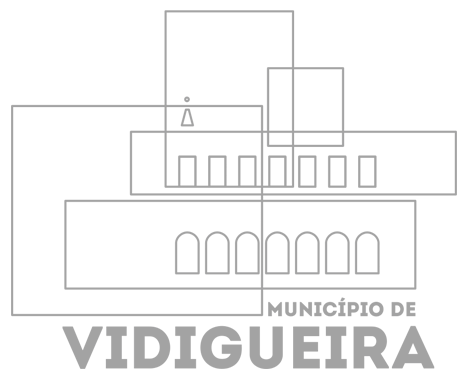
RESEARCH
Bibliography & useful links
ALARCÃO, Jorge de (1988). Roman Portugal: Gazetteer, Volume II, Fasc. 3 – Évora, Faro & Lagos. Aris & Philips LTD, Warminster, p. 190.
ALARCÃO, Jorge de; ÉTIENNE, Robert; MAYET, Françoise; MANTAS, Vasco Gil; SILLIÈRES, Pierre (1990). Les villas romaines de São Cucufate (Portugal). De Boccard, Paris, 2 vols.
ALARCÃO, Jorge Manuel N.L., ÉTIENNE, Robert e MAYET, Françoise (1995). Os monumentos cristãos da villa de S. Cucufate. In 4ª Reunião de Arqueologia Cristã Hispânica, Lisboa. Institut d’Estudis Catalans, (Monografies de la Secció Històrico-Arqueològica, 4), Barcelona, pp. 383-388.
ALARCÃO, Jorge de (1998). Roteiros da Arqueologia Portuguesa, 5 – S. Cucufate. Instituto Português do Património Arquitectónico (IPPAR), Lisboa.
ALFENIM, Rafael (2001). O Sítio Arqueológico de São Cucufate. In Património / Estudos, n.º 1, Instituto Português do Património Arquitetónico, Lisboa, pp. 68-69.
MARECO, Patrícia (2006). Sítios Arqueológicos e Centros de Interpretação, em Portugal – Alentejo e Algarve. Dissertação de Mestrado apresentada ao Instituto de Ciências Sociais da Universidade do Minho, pp. 128-137. Disponível em: Consultar Artigo Completo → [Consultado a 20 de março de 2023].
